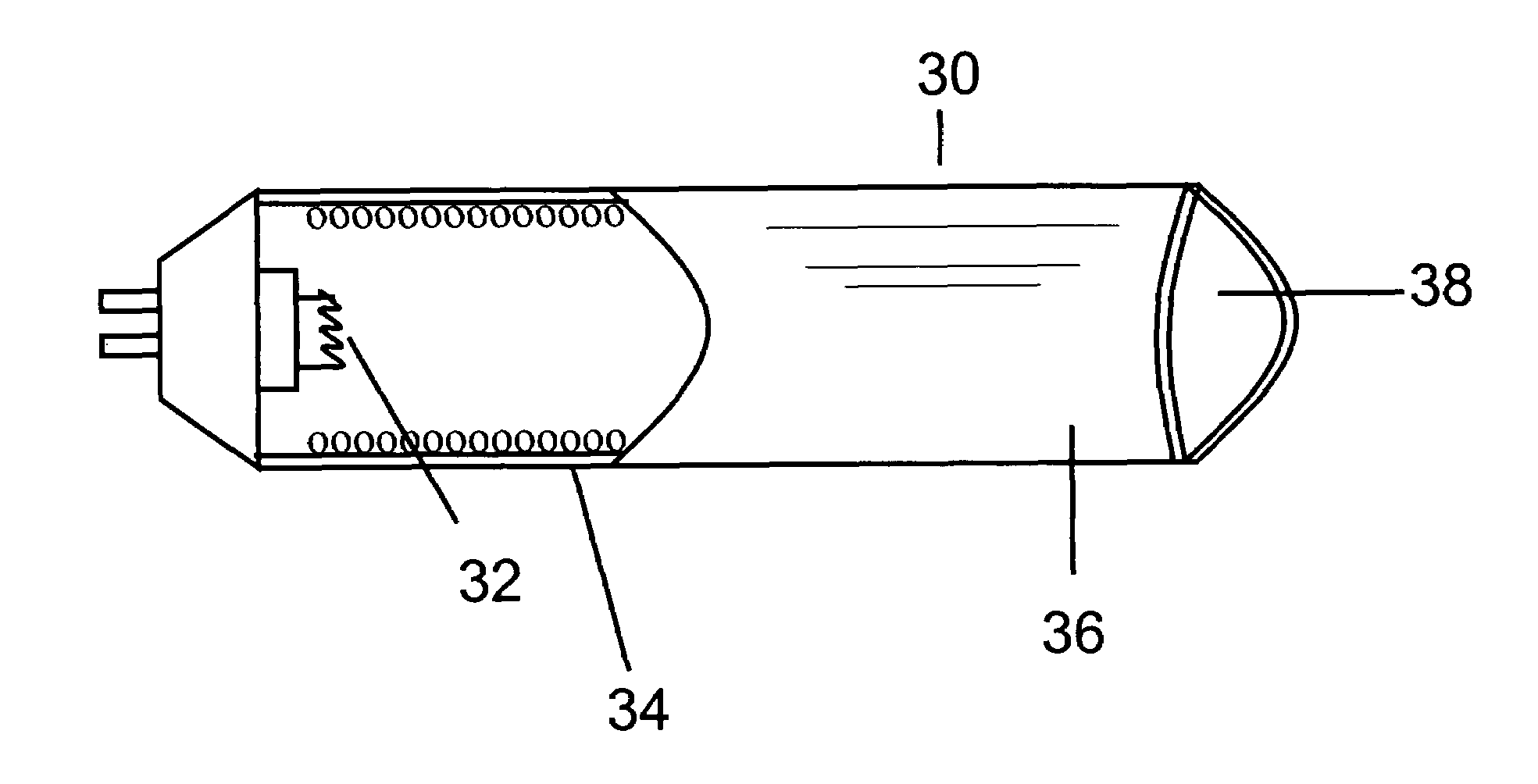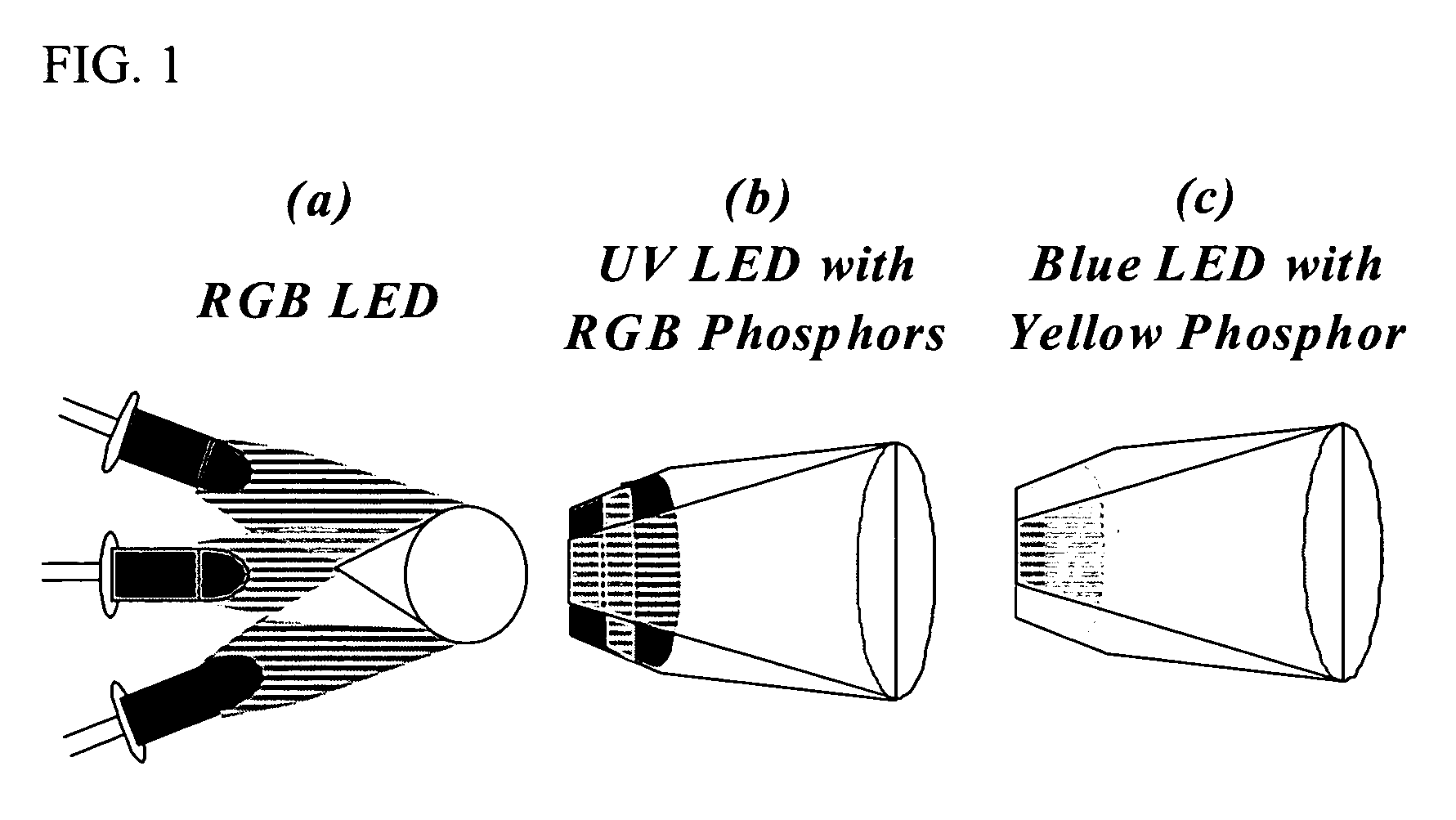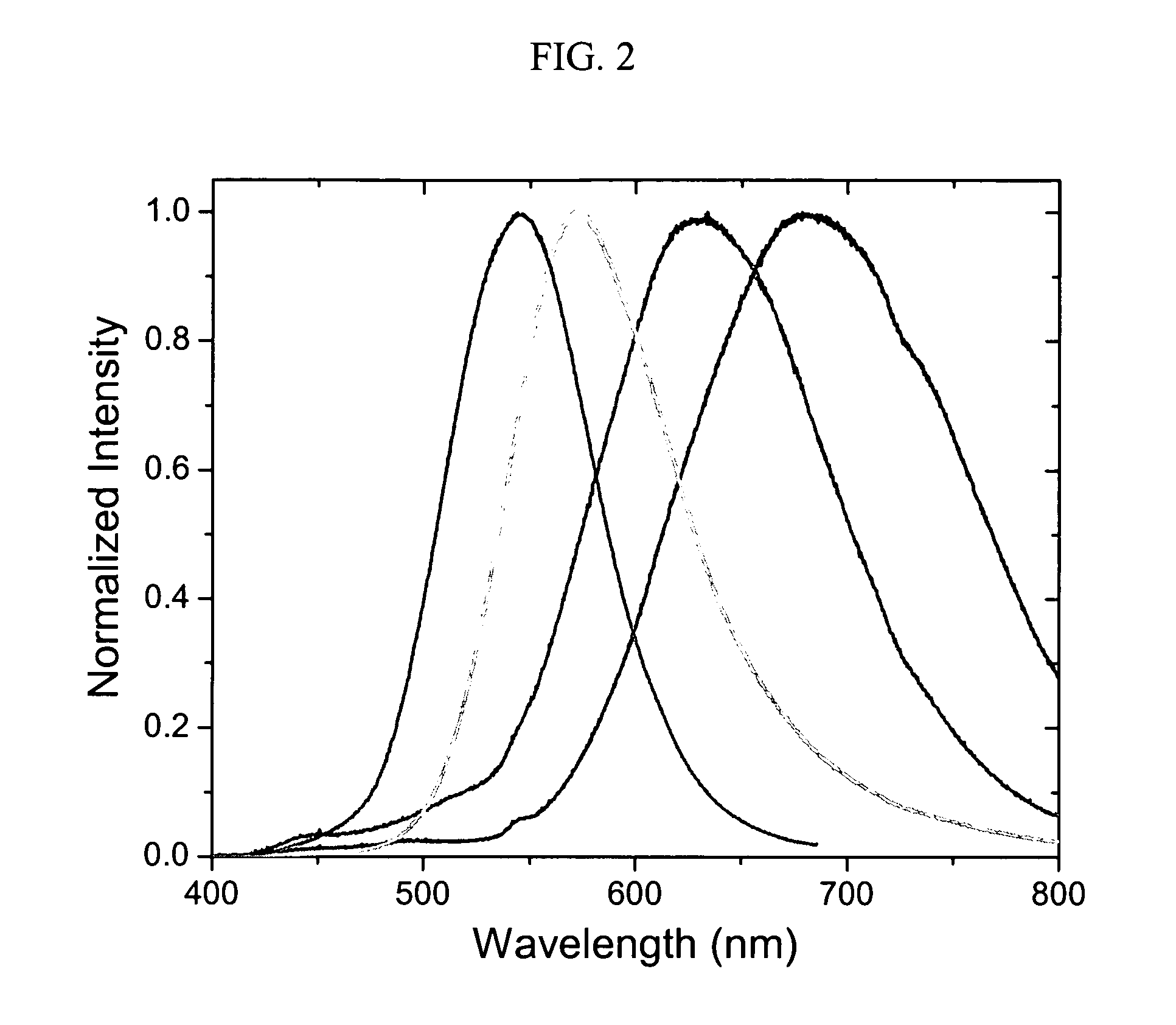Phosphor materials and illumination devices made therefrom
a technology of phosphor materials and illumination devices, which is applied in the direction of discharge tube luminescnet screens, energy-saving lighting, sustainable buildings, etc., can solve the problems of low efficiency of current incandescent and fluorescent lamps, low photoluminescence efficiency, and continued energy wastage for almost two decades, and achieves high photoluminescence efficiency and high efficiency. , the effect of high efficiency
- Summary
- Abstract
- Description
- Claims
- Application Information
AI Technical Summary
Benefits of technology
Problems solved by technology
Method used
Image
Examples
example 1
Production of a White Light Emitting Illumination Device Using a Silicon Nanoparticle-Based Phosphor Material
[0058]This example provides one non-limiting example of a method that may be used to produce a white light illumination device from a blue LED and a silicon nanoparticle-based phosphor material.
[0059]Two phosphor / binder mixtures of silicon nanoparticles with a paraffin wax binder. Hexane was used as a solvent to dissolve the wax and disperse the silicon nanoparticles within the wax binder. In the first mixture, silicon nanoparticles with yellow luminescent emission (λmax=588 nm) were added to the paraffin / hexane binder solution. In the second mixture, silicon nanoparticles with red-orange luminescent emission (λmax=640 nm) were added to a second paraffin / hexane binder solution. In both cases, the hexane solvent was partially removed via evacuation after mixing to form a paste. This paste was applied to an uncoated blue LED die (CREE Xbright InGaN on SiC die, obtained from Ill...
example 2
Production of a White Light Emitting Illumination Device Using a Silicon Nanoparticle-Based Phosphor Material
[0060]This example provides another non-limiting example of a method that may be used to produce a white light illumination device from a blue LED and a silicon nanoparticle-based phosphor material.
[0061]A phosphor / binder mixture of silicon nanoparticles in a UV-curable acrylate binder was prepared. Since the UV-curable acrylate is a liquid adhesive resin, no solvent was needed. For this device, two types of silicon nanoparticles were produced. The first phosphor consisted of silicon nanoparticles with red luminescent emission (λmax=700 nm). These nanoparticles were combined with NOA 88 UV-curable acrylate adhesive (Norland Products, Inc.) in a ratio of approximately 1:10 nanoparticles:acrylate. The second phosphor consisted of silicon nanoparticles with green luminescent emission (λmax=555 nm). These nanoparticles were combined with a second portion of NOA 88 UV-curable acry...
PUM
 Login to View More
Login to View More Abstract
Description
Claims
Application Information
 Login to View More
Login to View More - R&D
- Intellectual Property
- Life Sciences
- Materials
- Tech Scout
- Unparalleled Data Quality
- Higher Quality Content
- 60% Fewer Hallucinations
Browse by: Latest US Patents, China's latest patents, Technical Efficacy Thesaurus, Application Domain, Technology Topic, Popular Technical Reports.
© 2025 PatSnap. All rights reserved.Legal|Privacy policy|Modern Slavery Act Transparency Statement|Sitemap|About US| Contact US: help@patsnap.com



